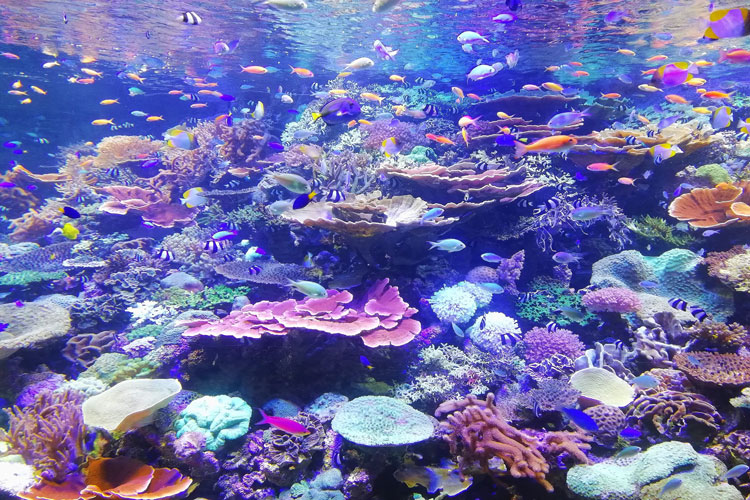
Many corals are filled with bright and dull colors. photo courtesy of unsplash.com
The Coral reefs, an essential component of the ocean, are at extreme risk and it is our responsibility to protect them.
As we all know by now, the coral reefs are dying. Or at least they are under an extreme amount of stress. This is a huge issue for everyone, even though we are located in a landlocked state. Although we live in Colorado, we are still making an impact on the Carbon Dioxide (CO2) that is produced. CO2 is put into the air and the ocean takes half of it out of the atmosphere. This is results in a huge problem for the ocean. Corals use calcium and hydrogen molecules to build the shells and skeletons they need in order to survive. These coral skeletons are dying.
Corals are actually animals made up of polyps. Polyps are white like bones, while algae gives the corals vibrant and dull colors. Since corals are considered animals, they are free-moving and attach themselves to rocks in order to build their skeletons. Corals are extremely sensitive to their surroundings, so even minor changes in the ocean can cause major changes for corals.
Corals house a quarter of the ocean’s marine life; without these corals, the ocean’s food chains would cause a major domino effect on the environment and the economy. Corals alone provides shelter and food for marine life. If the corals aren’t there, then the fish will die, causing fisheries to go out of business. This is all the start of a very large change for marine life.
Although the reefs are dying, there are many recent efforts to replenish them. Efforts include regrowing the corals in nurseries on land near the coast or a different type of nursery on coral branches in the ocean water near the parent reefs. The ocean water on the branches allows for the organic flow of the organism. The corals that are being grown in a nursery with controlled environments are able to avoid growth disturbances. The branches allow for easier transportation and accessibility within the ocean.
So what does this mean for Colorado? Colorado State University (CSU) holds a bank filled with cells from various organisms including corals. CSU can help rebuild those corals with the cells that have been stored. Furthermore, we can help improve the oceans by reducing our carbon footprint and switching to more sustainable energy statewide. To reduce our carbon footprint we can carpool on our ways to work and school. Also reducing the amount of waste we produce by recycling and reusing our materials. People can also reuse water bottles and bags to limit the amount of plastic waste and CO2 produced.
By reducing our carbon footprint, using sustainable energy, and using coral nurseries, we are increasing the chances of coral sustainability and regrowth rather than having to use the coral cells that have been stored. Reducing our carbon footprint on the earth will not only help the coral reefs globally but also many other ecosystems.